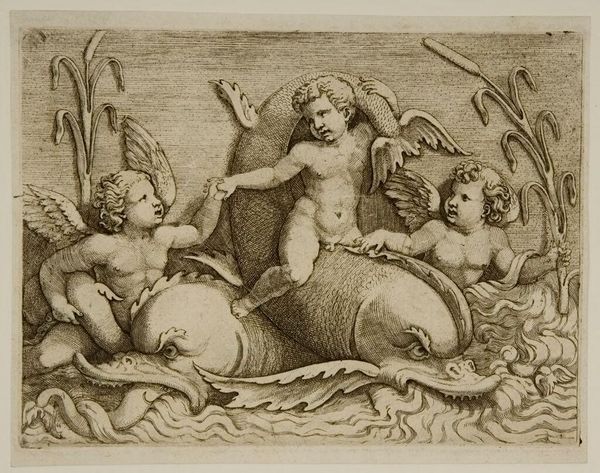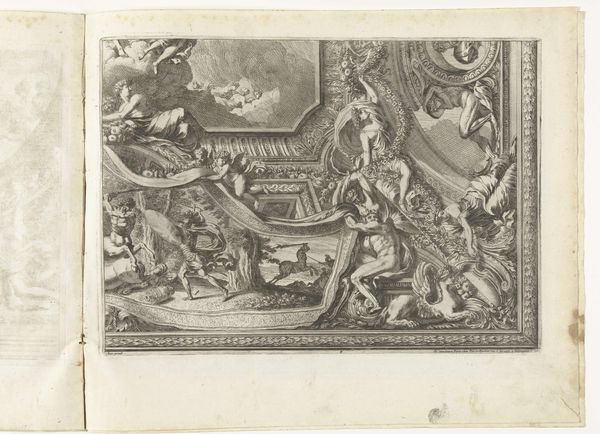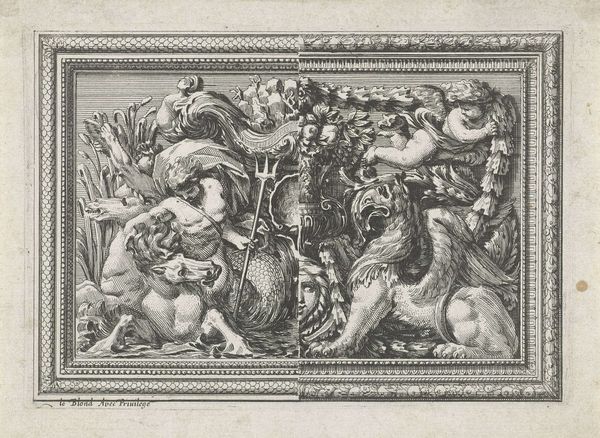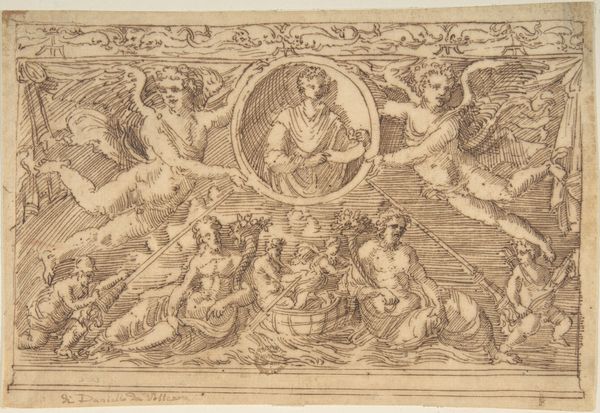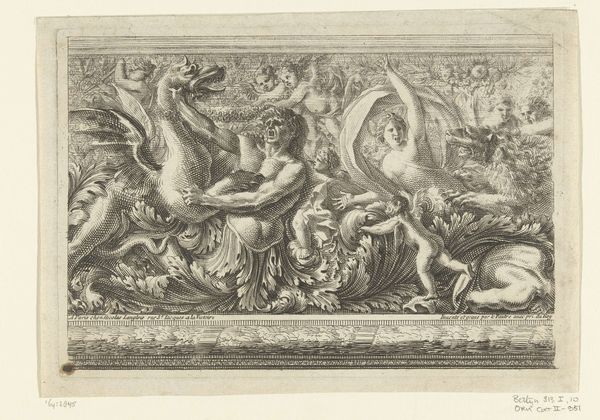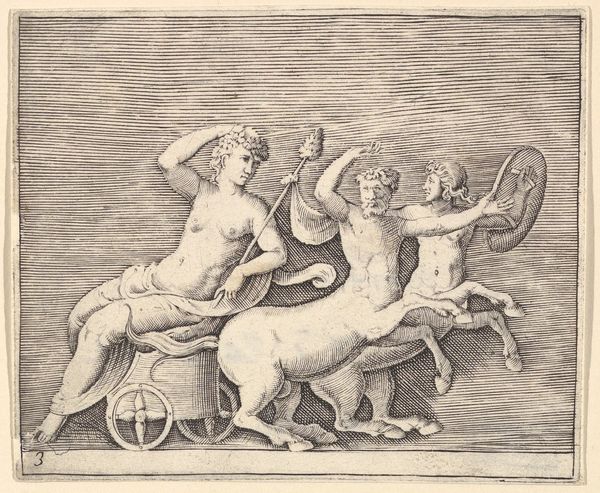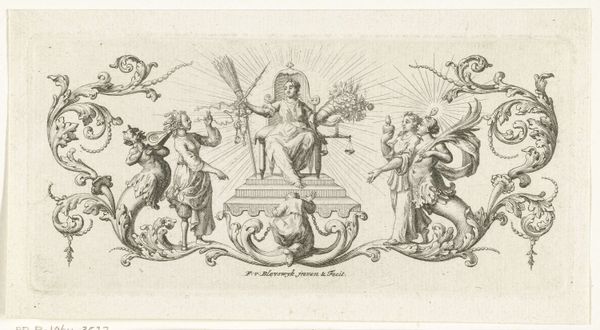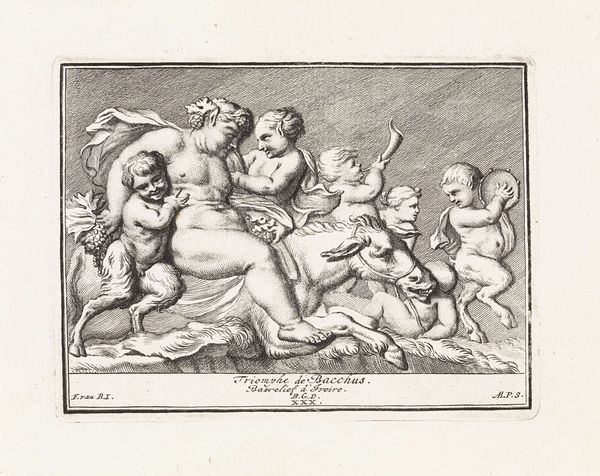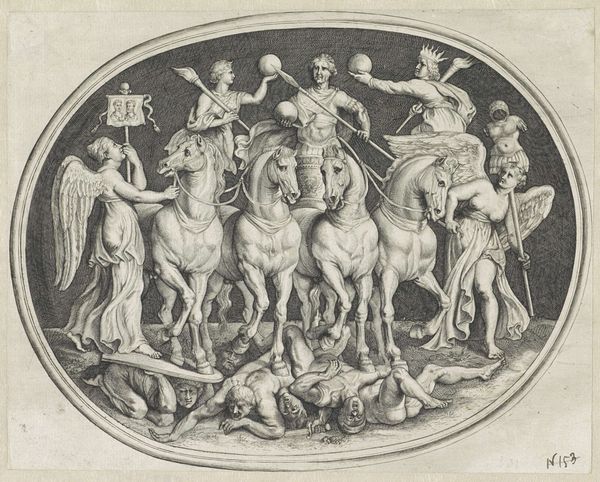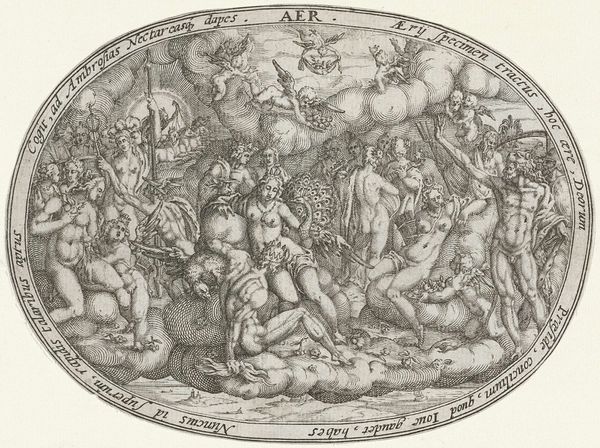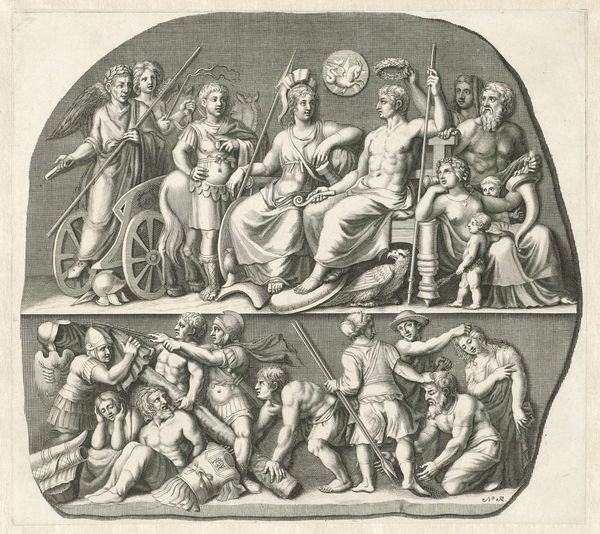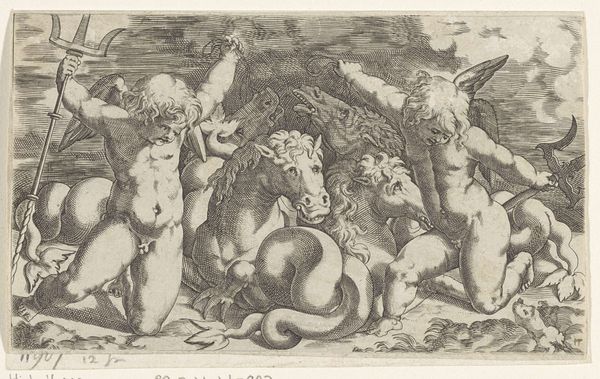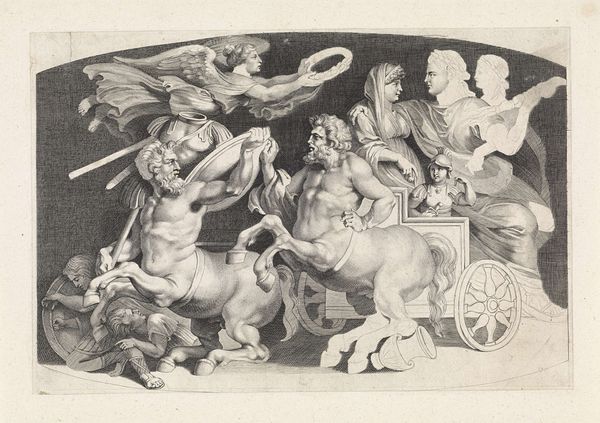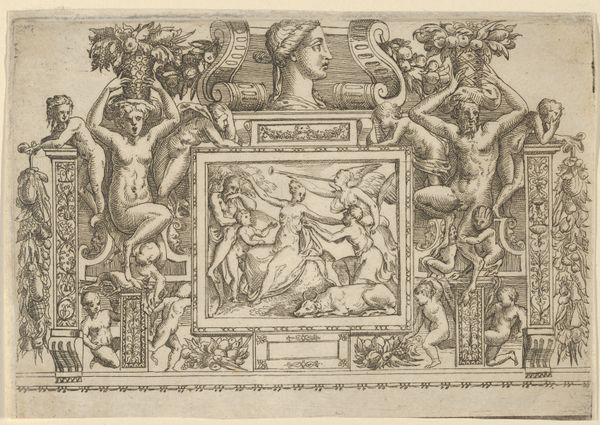
print, relief, engraving
#
allegory
#
baroque
# print
#
greek-and-roman-art
#
relief
#
figuration
#
line
#
history-painting
#
engraving
Dimensions: height 221 mm, width 305 mm
Copyright: Rijks Museum: Open Domain
This print, titled "Camee met de triomf van Germanicus en Agrippina," was made anonymously. The image depicts Germanicus and Agrippina, celebrated Roman figures, in a triumphal procession. This print is fascinating because it reflects the power of imagery in constructing and reinforcing social and political hierarchies. The visual codes used, such as the laurel wreath and the victorious poses, are direct cultural references to Roman imperial authority. The social conditions that shaped its production are rooted in the enduring fascination with classical antiquity. Though the precise date and country of origin are unknown, it's likely that the artwork was produced during a period of renewed interest in classical art and culture, such as the Renaissance or the Neoclassical era. To fully understand this print, we might turn to archaeological records, historical texts, and studies of the classical tradition in European art. Approaching art history in this way reminds us that the meaning of art is always contingent on its social and institutional context.
Comments
No comments
Be the first to comment and join the conversation on the ultimate creative platform.
